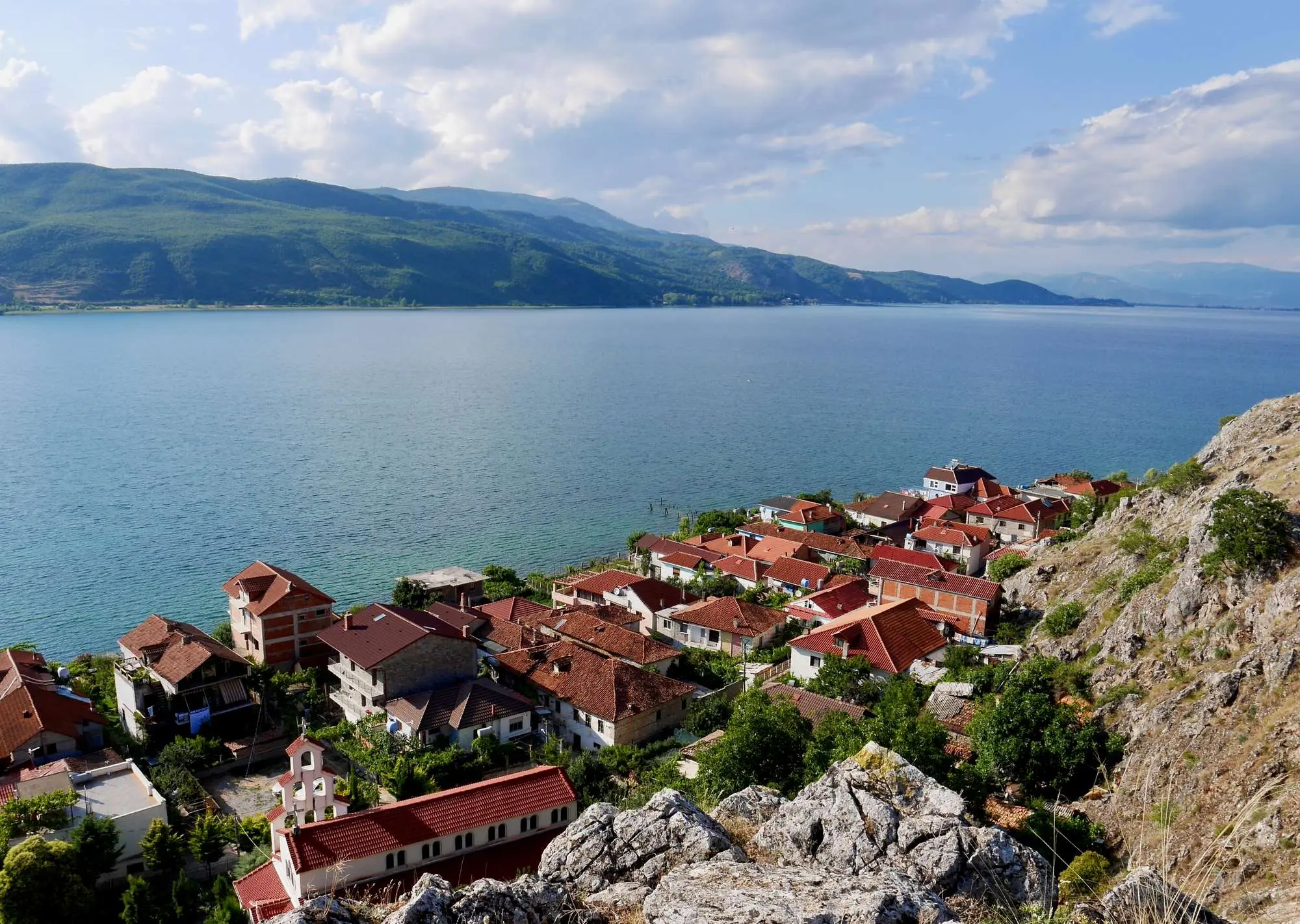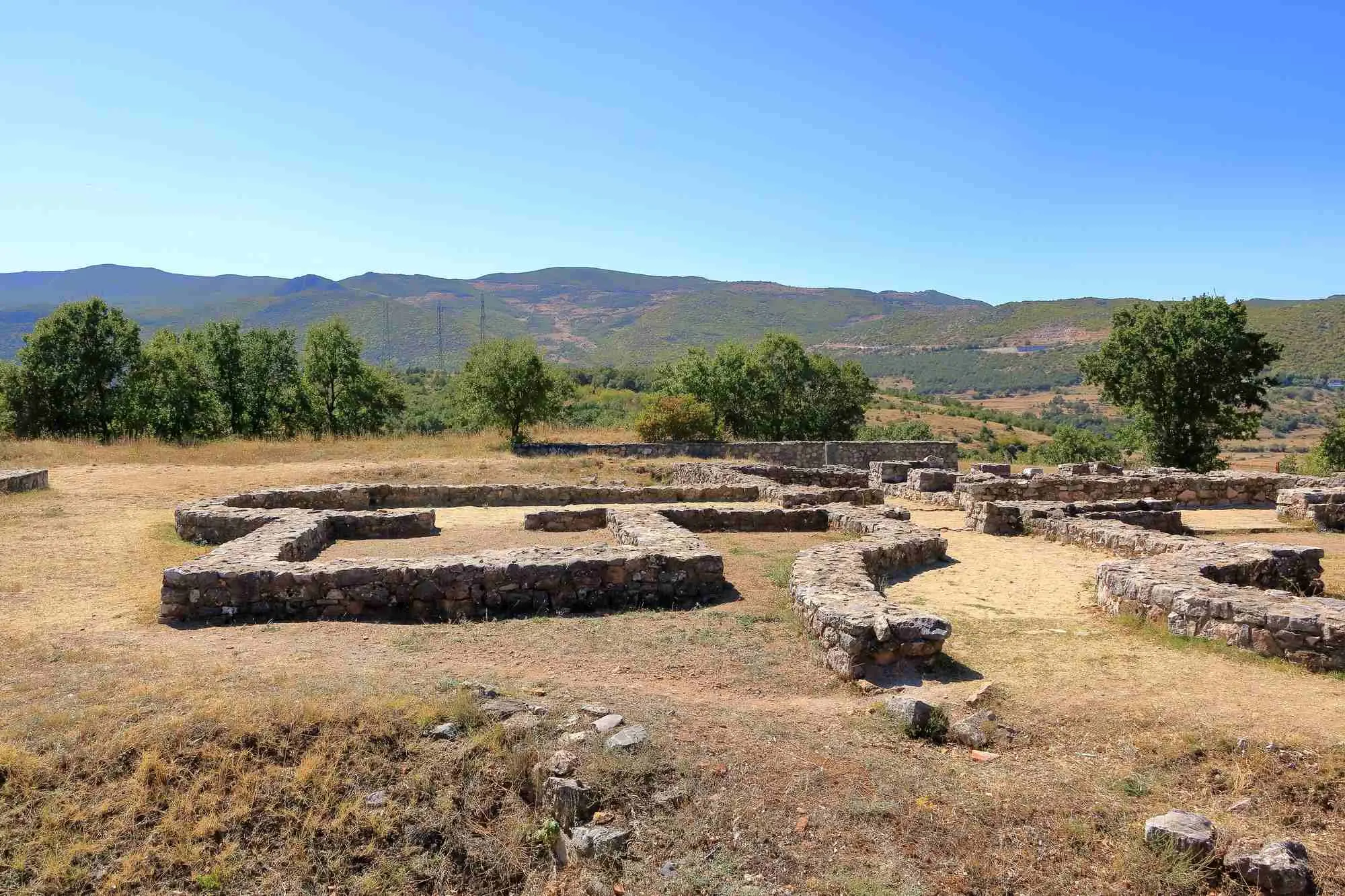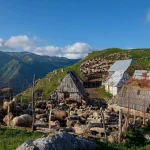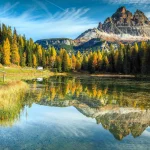Lin hides an 8,000-year-old prehistoric village in its embrace
In a hidden corner of Albania, right on the shore of one of the oldest and deepest lakes in Europe, lies the village of Lin. At first glance, it appears to be a quiet community, clustered on a small peninsula that stretches into Lake Ohrid like a finger, facing the Macedonian side. Today, it appears modest and unassuming, but it has long carried layers of history that make it one of the most culturally fascinating places in the entire region.
On a hill above the village, still standing are the remains of an early Christian basilica from the 6th century. Although without a roof and walls, the ground still preserves colorful mosaics with geometric and floral patterns that have withstood the test of time. These traces from late antiquity indicate the religious significance of Lin during the early Byzantine period, when pilgrims and travelers en route to Ohrid would stop here to pray, rest, or immerse themselves in the silence of a sacred space. At that time, this place was a meeting point of the spiritual and the everyday, where land, water, and faith came together.
Still, the greatest surprise was discovered only recently, not on the hill above the village, but in the depths of the lake below it.

Lin, Photo: Adriana.stapfl Depositphotos
On the hill are the remains of a late antique basilica, and beneath the lake lies the oldest water settlement in Europe.
Thanks to the joint efforts of Albanian and Swiss archaeologists, in recent years, one of the most significant archaeological sites in Europe was uncovered just below the surface of Lake Ohrid, along the shore of Lin. It is a submerged Neolithic settlement dated between six thousand two hundred and four thousand years before Christ, which makes it the oldest known lakeside settlement on the continent.
The settlement was built on wooden posts driven into the lakebed, with houses raised above the water. Archaeologists believe that the community consisted of between 400 and 800 people, living in several dozen wooden homes made of oak, pine, and spruce. The people of Lin in that period were far more than just fishermen and gatherers. They cultivated grain, domesticated animals, made pottery, tools, and the first metal objects. Preserved wooden posts, fragments of pottery, copper tools, and animal bones found underwater reveal a complex and well-organized society.

Lake Ohrid, Lin, Photo: Dynamoland Depositphotos
Thousands of years before the first European capitals were founded, people here were already building houses above the water.
What further fascinates scientists is the way this site can be studied. Wooden remains have been preserved thanks to the lake’s cold and stable underwater environment. Using advanced methods such as dendrochronology, the study of tree rings, archaeologists can reconstruct building years and settlement phases with astonishing precision, almost as if reading a diary carved into the wood. Radiocarbon analysis additionally confirms the age of the materials and makes it possible to create a detailed timeline showing that the settlement was active over several centuries and multiple phases.
For the scientific community, this discovery is not just a local curiosity. Lin, now emerging from the lake, becomes a key point in understanding how agricultural culture spread from Southeastern Europe toward the center of the continent. It appears that this place may have been one of the bridges through which knowledge of farming and animal husbandry traveled from the Near East and the Balkans toward present-day Italy, France, and Germany.
Discoveries in Lin are changing our understanding of the history of Southeastern Europe and of human settlement itself.
While the colorful mosaics on the hill still shimmer under the midday sun, and the waves of the lake gently touch the shore, Lin is gradually turning into a layered historical palimpsest. Above the water, we see traces of late antiquity, early Christianity, and the Byzantine presence. Below the surface, the whisper of the Neolithic, where people first built, sowed, hunted, and dreamed in a place that would remain a home for thousands of years to come.
Lin may seem like a forgotten village today, but thanks to everything it hides, both above and below the surface, it is becoming one of the most important prehistoric sites in Europe. And this is only the beginning of its story.
Nearby Lin…




Leave a Reply